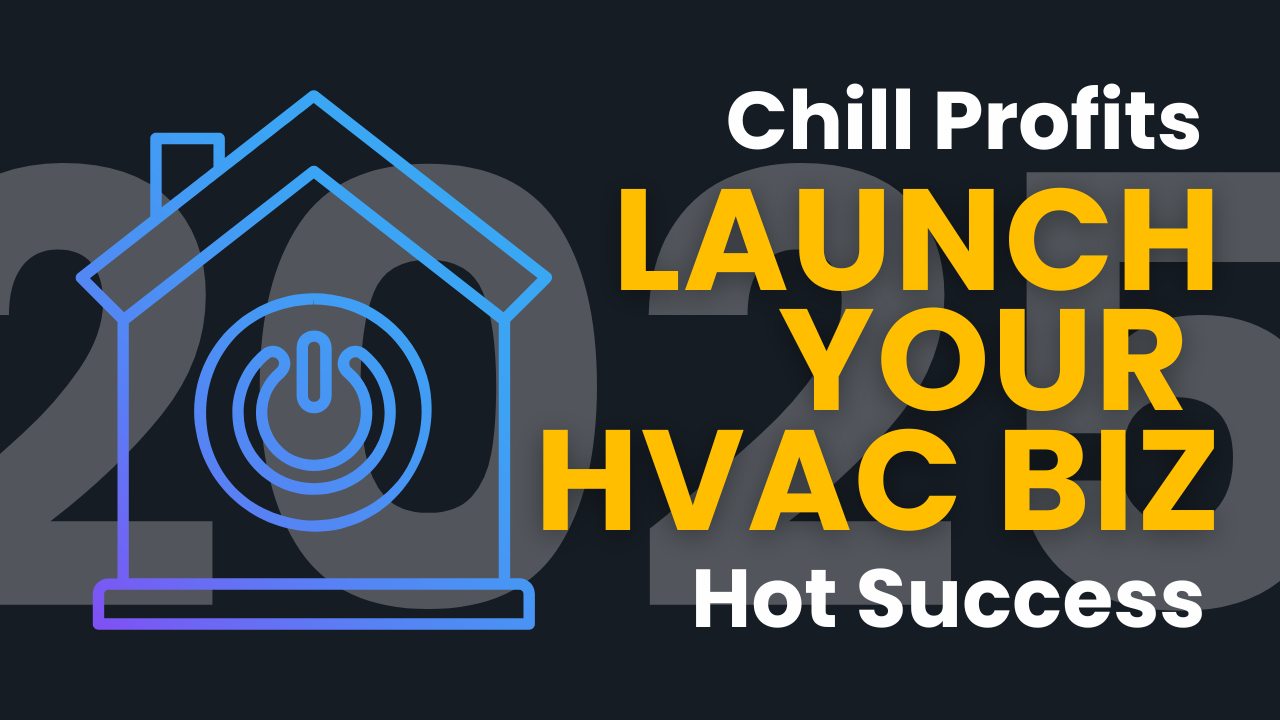
| Getting your Trinity Audio player ready... |
Starting an HVAC business is about creating a legacy, a name individuals can call when their comfort hangs in the balance, not simply about repairing air conditioners or installing heating units. But aspirations will not pay the bills, and passion will not light the lights.
You need a plan. A solid-as-a-rock HVAC business plan that sees you through stormy weather and hot summers alike. Let’s dissect it step by step using an HVAC business plan template that makes success more accessible.
What is the Business Plan of an HVAC Company?
Reflect on your business plan as your North Star — that shining star that guides you when the times are tough. It’s not forms; it’s your vision, your strategy, and your promise to yourself that this company will be a success. Whether you’re courting investors or just trying to get your head together, the business plan for HVAC company is your foundation.
HVAC Business Plan Checklist
Executive Summary
This is your elevator pitch, your hook that makes people want to hear your story.
- Mission Statement: Why did you start this firm? Maybe you wanted to bring honest, reliable service to your community. Maybe you’re a second-generation tech carrying on the family business. Spell it out.
- Vision: Picture your company in five years. Do you have a fleet of trucks? Are you the family HVAC name in town? Think big.
- Objectives: Ensure you have specific goals. Get 50 customers in year one. Six figures in year two. Whatever gets you pumped up.
- USP (Unique Selling Proposition): What makes you different? Maybe it’s your lightning-fast response times or your commitment to eco-friendly systems.
Company Description
That’s where you communicate your back story — that defining moment when you decided to commercialize your talent.
- History: Retell your story. Did you start out as an apprentice? Spared over years to buy your first van?
- Legal Structure: Sole proprietor, LLC, corp.? Be definitive.
- Location & Service Area: Tell them where you’re based and how far afield you’re willing to come to serve them.
- Services Offered: Installation, repair, maintenance — write down every service, however small. Clients like knowing exactly what you do.
Market Analysis
If you want to win the game, you’ve got to know the players.
- Industry Overview: The HVAC industry is thriving, especially with the focus on energy efficiency and smart home systems. People need you.
- Target Market: Homeowners? Property managers? Commercial buildings? Learn about your people.
- Competitor Analysis: See who you’re competing with. What are they strong at? What are they weak at? Take a page from them, then do it better.
Organizational Structure
Behind every great company is a team of passionate pros getting everything to hum along like a Swiss watch.
- Management Team: Highlight your players’ experience — even if that’s you (at least for now).
- Roles & Responsibilities: Define who does what, from the lead tech to the office admin.
- Hiring & Training: Define how you’ll build a dream team, including apprenticeships and ongoing education.
Products and Services
Be proud of what you can do.
- Service List: Be specific. Residential installs, commercial repairs, duct cleaning — no acronyms.
- Pricing Strategy: Flat fee or by the hour? Senior and vet specials?
- Future Offerings: Thinking of entering the solar-powered HVAC or geothermal unit market? Seed that idea.
Marketing Strategy
If a tree falls in the forest, and no one’s around to hear it, does it make a sound? The same goes for your business — people need to know you exist.
- Brand Identity: What do you want people to think of when they say your name? Reliable? Cheap? Upscale?
- Marketing Channels: Leverage anything from Google AdWords and search engine optimization (hello, HVAC SEO experts) to local sponsorships and fundraisers.
- Promotions: Consider providing seasonal discounts, referral incentives, or maintenance packages to get customers back.
Operational Plan
Time to get down to the nitty-gritty of how your business actually works.
- Service Process: What happens from the moment a customer calls to the final handshake? Map it out.
- Supplier Relationships: List your go-to suppliers for equipment and parts — and always have a backup.
- Technology & Tools: Are you using the best HVAC CRM software to assist with your operations? If you are, you may not be. It may be time.
Financial Plan
Numbers don’t lie, and if success is what you are after, you need a financial plan.
- Revenue & Expenses: Forecast your income and expenses — from vehicle and equipment upkeep to wages and advertising.
- Break-even Analysis: When will your revenue finally outstrip your costs (and break out the champagne when you get there).
- Funding Requirements: If you need start-up capital, state how much and for what.
Risk Assessment
Hope for the best, plan for the worst.
- Potential Risks: include events like a seasonal downturn, shortages of equipment, or a new competitor moving in next door.
- Mitigation Strategies: Have a game plan for every risk — whether that’s diversifying services or building a financial cushion for slow months.
Appendices
Back up your plan with hard evidence.
- Certifications & Licenses: Show you’re legit.
- Market Research: Prove there’s a demand for your services.
- Customer Testimonials: Nothing sells like happy clients singing your praises.
Market Validation: The HVAC Boom You Can’t Ignore
The U.S. HVAC market was valued at $15.16 billion in 2020 and will grow at a 6% CAGR through 2028. That’s not growth—it’s a wildfire of opportunity. Intense weather patterns, more construction, and the need for energy efficiency are fueling demand. Homeowners and businesses are looking for reliable, sustainable solutions—and your HVAC business could be their beacon. Take it into account from this HVAC business plan example.
Quick Stat Snapshot:
| Metric | Value |
| Market Size (2020) | $15.16 billion |
| Projected CAGR (2021–2028) | 6% |
| Average U.S. HVAC Replacement | 3 million units/year |
Financial HVAC Business Plan
Starting an HVAC business isn’t cheap, but if executed properly, it can be a goldmine. Here’s an approximate estimate using real-world figures to guide your planning.
| Category | Estimated Cost |
| Total Startup Expenses | $11,500 |
| Initial Inventory & Equipment | $18,000 |
| Marketing & Branding | $3,500 |
| Website Development | $1,000 |
| Cash Reserve | $15,000 |
| Total Initial Investment | $50,000 |
Here’s what the projected financial journey could look like:
| Year | Revenue | Net Profit | Employees |
| Year 1 | $360,723 | $13,038 | 5 |
| Year 2 | $538,041 | $44,360 | 15 |
| Year 3 | $665,012 | $65,638 | 25 |
These are not figures on a page — this is the beat of your business. It gets potential investors to listen to you, and it provides you with a real goal to aim for.
Key Success Factors
The model business plan highlighted key ingredients of success in the long term, which we can include in your strategy:
- Economies of Scope: Being able to have both indoor and outdoor services enables you to secure big contracts and diversify revenue streams.
- Expertise: Emphasize your experience with client testimonials and case studies.
- Location Strategy: Position in places with strong building and extreme HVAC need — places that have hot summers and freezing winters are your treasure trove.
- Pricing Advantage: Negotiate the prices of suppliers for best value, and pass on some cost savings to customers to outcompete the competition.
Marketing & Sales: Shouting Your Name from the Rooftops
The best HVAC business in the world means nothing if people don’t know you exist. Creating a brand identity starts with choosing between HVAC business name ideas, continues with the best HVAC CRM software. When it’s done, you need to outline a smart approach to marketing:
- Website & SEO: Your website is your virtual storefront—get it shining with local SEO so you’re listed in “near me” searches.
- Email & Direct Mail Campaigns: Share promotions, maintenance tips, and seasonal offers.
- Social Media & Google Ads: Showcase your work through before-and-after photos, customer reviews, and how-to content.
In Summary
You need courage to enter the HVAC industry, drive, and have an HVAC business plan example to know where to start; that’s as secure as the units you’re placing. But armed with a judicious HVAC business plan template, you’re not simply another technician with a belt around your waist—you’re a professional who solves.



